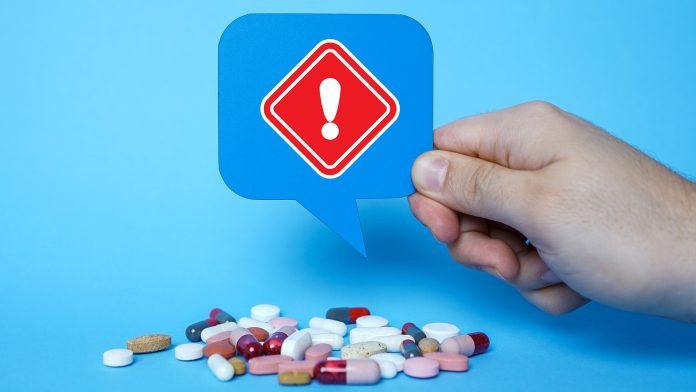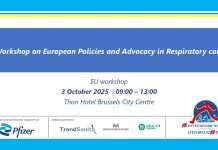
HEQ spoke to Mike Isles, executive director of the European Alliance for Access to Safe Medicines (EAASM) about the urgent need to tackle medication errors in healthcare.
An estimated 237 million medication errors occur every year in the UK alone. Preventable errors present a huge economic and clinical burden for healthcare systems with an annual global cost equating to $42bn, according to the World Health Organization (WHO). The causes of medication errors are extensive and complex and not only directly impact patients but also healthcare workers and carers, the so-called ‘second victims’ who can suffer emotional distress as a result.
In a White Paper released earlier this year by the European Alliance for Access to Safe Medicines (EAASM), it was reported that up to 50% of all hospital workers become a second victim at least once in their career. Entitled ‘The Urgent Need to Reduce Medication Errors in Hospitals to Prevent Patient and Second Victim Harm’ the paper posits recommendations to mitigate potential errors through the implementation and promotion of technological solutions, including medication traceability systems, and improved communication strategies that will help facilitate a culture of safety in clinical settings. To find out more, HEQ spoke to the EAASM’s Executive Director Mike Isles.
What is the role of the European Alliance for Access to Safe Medicines (EAASM) within the wider care landscape?
Essentially, we advocate and support anything to help improve patient safety. A particular area of focus is the Falsified Medicines Directive and its ongoing implementation, especially in hospitals. This is challenging as it requires the integration of different IT systems, but once achieved, hospitals will benefit from better inventory control and savings that ensue from that. Additionally, it will help integrate the internal medication systems to track medication and the medication process.
We have been extremely active in the area of nanomedicine products and their follow-ons, where patient safety issues have occurred due to a follow-on product not being appropriately assessed for its safety, quality, and efficacy. This has resulted in patients experiencing issues in the hospital environment. In addition, we support the Good Off-Label Use Practice and feel very strongly that patients should be told if they are given an off-label medication and should actually provide consent for that.
Our other organisation, the Alliance for Safe Online Pharmacy in the EU, has been advocating strongly for change to the proposed Digital Services Act (DSA) because as it currently stands, it will only legally oblige online marketplaces to ascertain who they are selling a domain name to. As the vast majority of the criminals are selling fake medicines via their websites through their own domain names they bought from registrars, we feel this is going to be an impotent act and we have written to MEPs, DG Connect and the Council of Europe.
Can you highlight some of the common causes of medication errors?
Medication errors, because of the complexity of the diagnosis, management and treatment of patient conditions require a very complex set of activities to be set in train. Medication errors can occur at each stage of the medication process and simplistically, that means the doctor who prescribes the medicine could prescribe it erroneously, or the pharmacist who dispenses the prescription could produce an erroneous prescription with the wrong dose or even the wrong product. Then, the most important stage, and that which statistics show constitutes the highest percentage of medication errors, is administration.
Whilst best practice and sharing of root cause analyses are great unless you have strong guidelines or even legislation, then the degree of implementation of a transparent culture will likely be slower in the uptake. We need a top-down approach.
In what ways can medication errors impact healthcare staff?
In a presentation by Ian Lindsley, Secretary of the European Biosafety Network, he shared survey results from Ipsos MORI that highlighted the level of trauma healthcare staff experience. A high percentage of healthcare staff have encountered or are affected by medication errors and the psychological trauma that can ensue as a result can only be mitigated through an internal hospital process that requires an open, transparent, and honest culture. Clearly, this does not exist. A bottom-up approach whereby the nurse tries to gain some sort of support up the hierarchy can be problematical. This leads to the current feeling that a top-down approach is required; we need leadership that is willing to acknowledge that medication errors happen and put in place a culture and standard operating procedures that actually ensure that any medication error is looked at deeply, and a root cause analysis is carried out so that the hospital can learn from its mistakes.
The aim of the WHO’s 2017 initiative – ‘The Third Global Patient Safety Challenge: Medication Without Harm’ – was to reduce medication errors and the associated harm in all countries around the world by 50% within five years. What progress has been made?
The pandemic has clearly impacted negatively on progress to date and the fact that ‘medication safety’ is the chosen title of this year’s World Patient Safety Day indicates that they really want to give this topic greater emphasis and accelerate progress in this area.
Your White Paper included a foreword from MEP Tomislav Sokol where he said: ‘In this day of technology, we have the tools to lift the burden from healthcare professionals and eliminate human errors’. Can you give examples of where digital tools have been employed in hospital settings to reduce potential errors?
One study featured in our recent White Paper shows categorically that digitalisation reduces medication errors by 58%. Digital tools can allow medication to be tracked from the right dosage, right patient, and right treatment point of view. But in addition, the fact that this will reduce the manual burden by those on the wards has to be considered very seriously because the study clearly revealed that funding and resource were the main barriers preventing the increased care of patients within the hospital setting.
Can you explain why the EAASM went about setting up the ECAMET Alliance?
Back in 2019, when we became more aware of the frequency and seriousness of medication errors, we set ourselves the objective of creating an Alliance and to produce a White Paper with a call to action to raise awareness amongst EU institutions and the Member States.
In addition, we needed to provide clear clinical evidence from international scientific associations to develop a set of regulations and a call for action to allocate funding to minimise medication errors across hospitals in Europe.
To establish the status quo across Europe, we had to carry out a comprehensive hospital-based survey among hospital pharmacists. This was designed in close liaison with the ECAMET Scientific Committee, to understand the current hospital practices and plans for the future.
317 surveys were completed and 25 reports have now been published on the ECAMET website. This survey was incredibly revealing and I would encourage all to view the consolidated report and also to use the interactive dashboard which enables the answers to be contrasted and compared across Europe.
If I may highlight some key findings from the survey, pharmacists stated that electronic prescription, medical errors surveillance and bar code medication administration systems are the most important areas that need acting upon. Funding, human resources and lack of trained staff were pinpointed as the main barriers to implementing these improvements.
It is clear that the benefits of digital tools are becoming more widely recognised. We are not taking away from the human element, as digitalisation will dramatically reduce the manual tasks and free up healthcare professionals to spend more quality time with their patients.
What other requirements are there to reduce medication errors in hospitals?
Clearly there is a need to encourage greater transparency in hospital settings as whilst most hospitals do routinely record medication errors for sharing continual improvement initiatives very few statistics are available to the public. Another worrying thing is that whilst 82% of hospitals are accredited, 13% do not include medication errors as part of their audit. Furthermore, beyond the hospital settings, we need to ensure greater interconnection between the hospital and the community. IT systems must join up so medical records are immediately transferred across to the community when a patient is discharged, such interconnectivity is woefully lacking as was seen from the answers in the survey.
Is there anything else that could be done at a policy level to support the reduction in medication errors?
It is our call to action; we would encourage the Commission to look very specifically at the White Paper and its content, which is comprehensive and is backed up by many, many scientific references.
Mike Isles
Executive Director
European Alliance for Access To Safe Medicines
eaasm.eu/en-gb/
https://twitter.com/intent/follow?original_referer=https%3A%2F%2Feaasm.eu%2F&ref_src=twsrc%5Etfw%7Ctwcamp%5Ebuttonembed%7Ctwterm%5Efollow%7Ctwgr%5EEAASMeds®ion=follow_link&screen_name=EAASMeds
This article is from issue 21 of Health Europa Quarterly. Click here to get your free subscription today.








